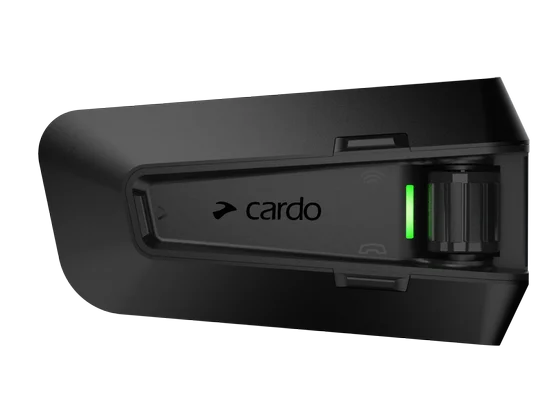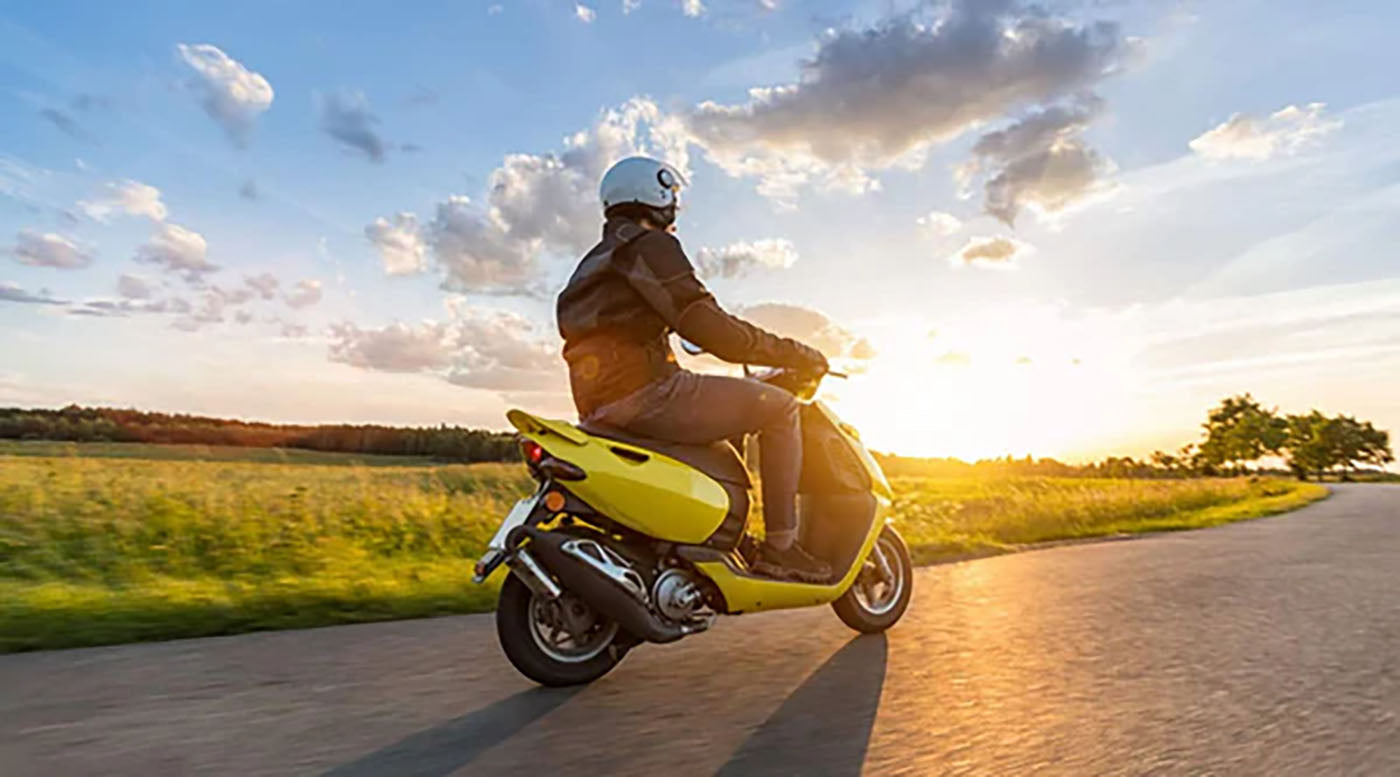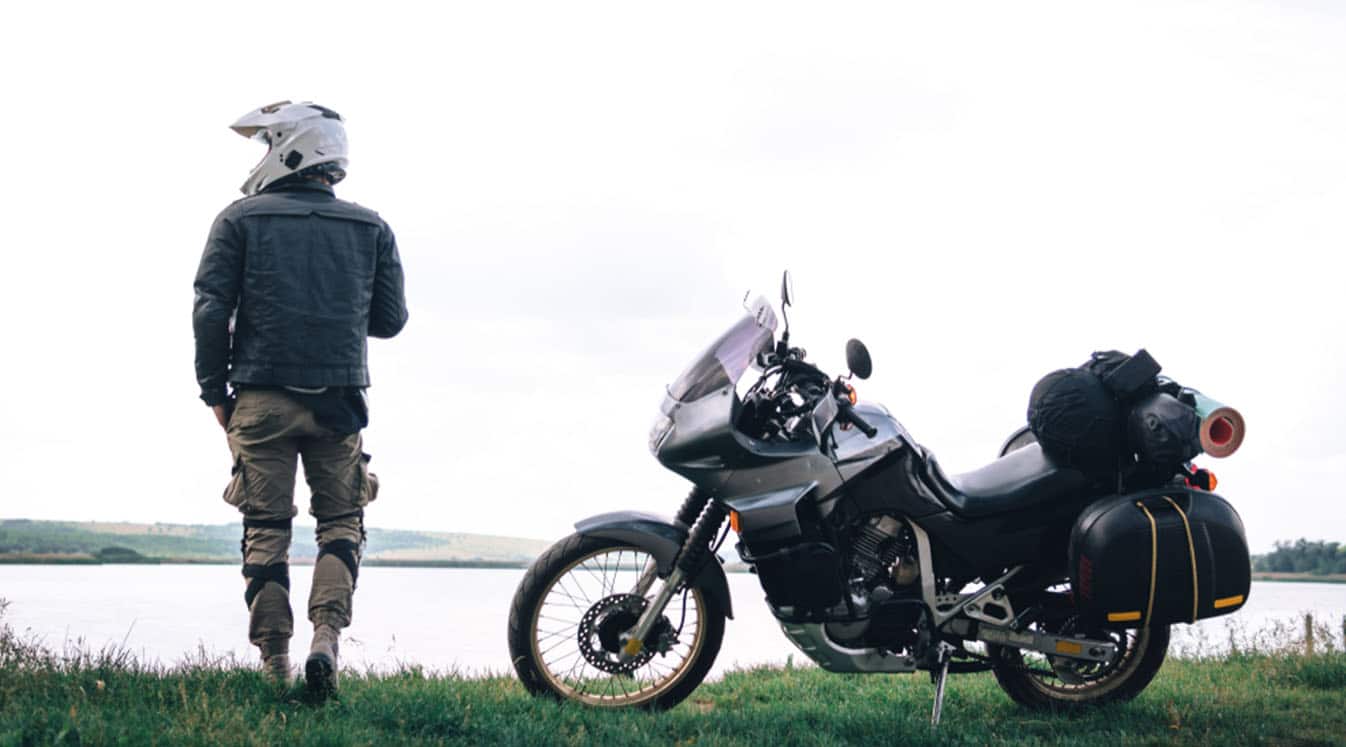Did you know that the word "moped" comes from blending "motor" and "pedal"? Or that scooters have been favorites among city commuters since the 1900s? These two-wheelers may look similar at first glance, but they each have distinct traits that make them unique — and, surprisingly, a lot of people still confuse the two! Whether you're a motorcycle newbie or just curious, it's time to clear up this long-standing mix-up.
A moped is typically a light two-wheeled vehicle with a small engine (50cc or less) and pedals, making it a bit like a bicycle with backup power. A scooter, on the other hand, has a step-through design, larger engines and no pedals — think Vespa cruising through Italian streets. Getting this right isn't just trivia. Knowing the difference can make or break your transportation decision.
This article will break down what sets mopeds and scooters apart. You’ll also explore key topics like moped and scooter laws, how to choose between them and even other types of two-wheeled rides. Stick around to find out which suits your lifestyle and road adventures best!
What Is a Moped?
A moped is a small single-seater vehicle with foot pedals like a bicycle and a small gasoline engine. The word “moped” is a combination of “motorized” and “pedal,” which refers to the vehicle’s combination of propulsion methods. Most mopeds rely at least in part on the rider’s pedaling for power, with the motor providing assistance and making it easier to pedal.
The difference between a moped and a motorized bicycle can be quite subtle, and it usually comes down to engine cc’s and maximum speed. The engine size of a moped is almost always under 50cc, but motorized bicycles’ engines are even smaller and may produce as little as two horsepower. A motorized bicycle often won’t be equipped with things like turn signals and headlights, which a moped usually must have. Mopeds may have bicycle frames or step-through frames.
Mopeds are also appreciated for their cost-effective nature, making them an affordable option for many riders. In most regions, obtaining a driver’s license to operate a moped is less complicated than for larger motor vehicles, and insurance costs are often lower as well. With their small engines or even electric motors, mopeds consume less fuel and produce fewer emissions than cars, and they’re often more accessible than options like electric bikes or electric scooters. This combination of affordability, ease of use and environmental benefits makes mopeds an appealing choice for short-distance commuters.
What Is a Scooter?
A scooter is essentially a stripped-down small-displacement motorcycle with a step-through chassis. Most scooters have engine power in the range of 50cc to 250cc, which means they can be substantially more powerful than mopeds and can reach higher top speeds.
Unlike a moped, all of a scooter’s power comes from its engine. And unlike a motorcycle or motorized bicycle, which both require the rider to shift gears, most scooters have an automatic transmission that makes them exceedingly simple to operate. A scooter must have all of the same equipment a motorcycle does, such as turn signals, a license plate and headlights.
Scooters are incredibly versatile, making them a go-to option for various needs — from urban commuting to recreational rides and even delivery services. With engine capacities ranging from low-powered models ideal for low-speed city travel to higher-capacity ones capable of high-speed cruising, scooters strike a balance between functionality and performance. Brands like Honda have championed this motor scooter style, offering fuel-efficient designs that appeal to both budget-conscious riders and those seeking eco-friendly alternatives. Additionally, scooters often simplify the licensing requirements compared to larger motorbikes or other motor vehicles, and they comply with local regulations with ease. Whether you’re navigating narrow streets or enjoying a weekend ride, the scooter’s practicality and adaptability shine through.
Motorcycle Helmet Bluetooth Systems for Scooter and Moped OwnersMoped and Scooter Laws
The laws that regulate mopeds and scooters vary widely from one U.S. state to another. Here are some common points where laws differ:
- In some states, you’ll need a license and/or registration to operate a moped or scooter, while in others you won’t.
- The minimum age required to operate a moped or scooter is different from one state to another. Many states allow riders under 18 to operate these vehicles, but some don’t.
- Many states require moped and scooter riders to wear helmets. (Regardless of whether it’s legal, you really need a helmet while riding either one.)
- The blurry legal distinction between moped and motorized bicycles can cause friction with the law if your vehicle is on the borderline.
The only way to know for sure is to check your state’s individual laws on mopeds and scooters. While you’re at it, learn about your state’s motorcycle helmet laws and make sure you’re following them.
Moped vs. Scooter: Which One Is Right for You?
What’s the small-displacement transport solution that meets your needs? Here are some important things to think about:
- Mopeds get better gas mileage, up to triple digits in many cases. The trade-off is that they typically have significantly less engine power than a scooter.
- For those who want some exercise as part of their transportation, the pedals on a moped can provide a mild to moderate level of physical activity.
- If you need to ride at highway speeds, a scooter will probably be your only option. However, many scooters still can’t keep up safely on a highway and may not be legal to ride there, so check local laws and keep the ride brief – even if it’s legal.
- True mopeds aren’t always easy to find in today’s market and, in practice, what you end up with may be something like a motorized bicycle or e-bike.
Other Two-Wheeled Vehicles
The world of powered two-wheeled vehicles goes far beyond mopeds and scooters, offering a wide range of options tailored to various needs. From motorbikes with robust rear wheel designs to electric scooters built for quick errands, there’s a vehicle for everyone. These vehicles vary in engine capacity, with some featuring smaller engines for easy handling and short-distance trips, while others are built for high-speed adventures. Understanding these differences is crucial, especially when considering factors like motorcycle insurance and whether you’ll need a motorcycle license to stay compliant with the law.
Each type of powered two-wheeled vehicle has its own unique features and uses. Differences in smaller wheels versus larger ones, maximum speed limits and intended terrain can dictate which vehicle suits your lifestyle best. For instance, scooters handle well in urban environments, thanks to their compact design, while motorbikes often deliver the performance required for long-distance cruising. Additionally, many vehicles have licensing requirements, and some also demand specific insurance coverage, helping riders manage their safety and legal responsibilities on the road.
- Motorbikes/Motorcycles: These terms are often interchangeable, referring to vehicles designed for higher speeds and longer distances. They are available in a variety of styles and engine sizes, typically featuring robust rear wheels and frames. Riders usually need a motorcycle license and specific motorcycle insurance to own and operate them.
- Electric Bikes: With smaller engines and smaller wheels, these are perfect for urban commuters needing a sustainable, short-distance solution.
- Dirt Bikes: Built for off-road adventures, these vehicles have specialized tires and a design fit for rugged terrains.
- Electric Scooters: Efficient for city travel, they are compact, lightweight and tailored for short trips with manageable speed limits.
Communication Devices for Moped and Scooter Riders
As previously mentioned, you should always be wearing a helmet when riding a scooter or a moped. And to maintain hands-free communication while you’re riding, it’s a great idea to invest in a motorcycle communication system to stay in touch with your world.
With a motorcycle intercom for your helmet you can answer calls, use your GPS and stream media hands-free while keeping your eyes on the road. Plus, our JBL Bluetooth motorcycle helmet speakers will give you killer sound for enjoying your favorite music during your commute or on a weekend ride. Whatever your choice in the moped vs. scooter question, staying safe and having fun should be your top priorities. Check out these Cardo reviews to see why riders everywhere trust our systems for reliable, high-quality communication on every ride.





